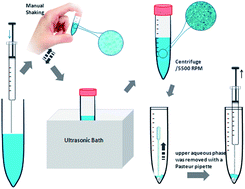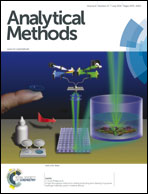A manual shaking-enhanced, ultrasound-assisted dispersive liquid–liquid microextraction for the determination of betamethasone and dexamethasone: optimization using Response surface methodology
Abstract
A simple, sensitive and efficient method known as manual shaking-enhanced, ultrasound-assisted dispersive liquid–liquid microextraction (MS-UADLLME) combined with high-performance liquid chromatography (HPLC) was developed for the extraction and determination of low concentrations of betamethasone (BM) and dexamethasone (DM) in serum and urine samples. A central composite chemometrics design was used for multivariate optimization of the effects of four different parameters influencing the extraction efficiency of the method. Response surface methodology (RSM) was applied to investigate the individual effects and possible interactions between the most effective variables, including volume of disperser and extraction solvent, ultrasound and manual shaking time on the chromatogram peak area of BM and DM. The respective linear range, detection limit (S/N = 3), and precision (n = 5) obtained were 0.4–550 ng mL−1, 0.18 ng mL−1 and 3.5–5.2% (for BM) and 0.2–430 ng mL−1, 0.09 ng mL−1 and 3.8–5.1% (for DM).


 Please wait while we load your content...
Please wait while we load your content...